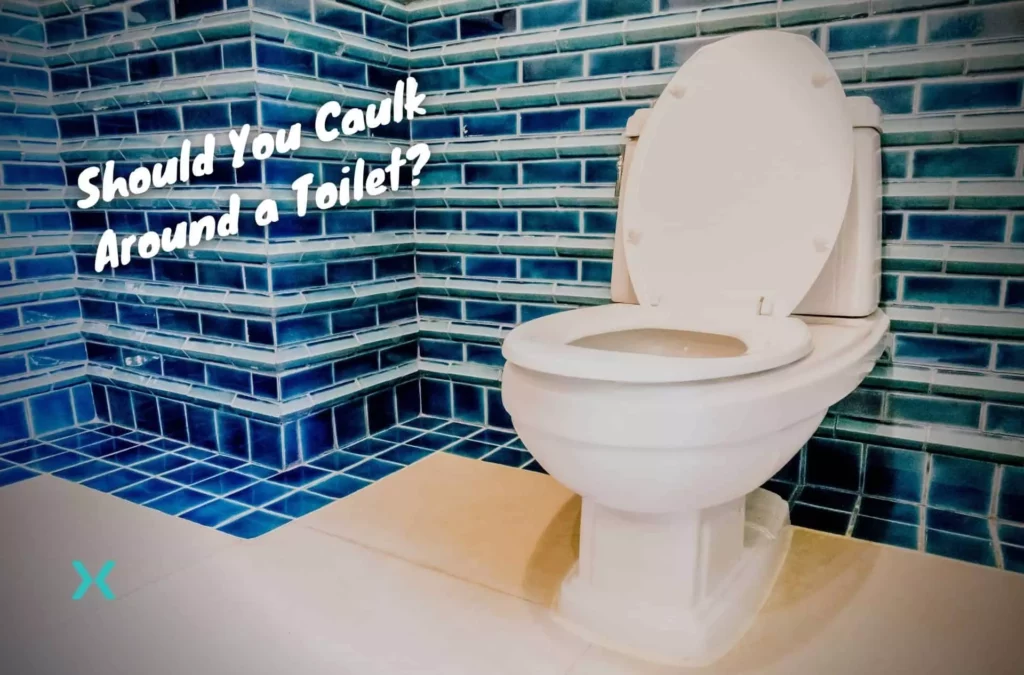🚽 Should You Caulk Around a Toilet?
The quick answer is yes. You should caulk around the base of a toilet. Caulking keeps the toilet secure and reduces the possibility of water contamination from other sources like mopping, shower splash, and if you have young children, misguided potty training.
You will find much debate online about whether or not you should caulk the base of your toilet.
So what is the real answer? Well, let’s get into the nuts and bolts of the argument and find out the answer to “to caulk or not to caulk?“
Table of Contents
🚽 Caulking Does Not Prevent Leak Detection
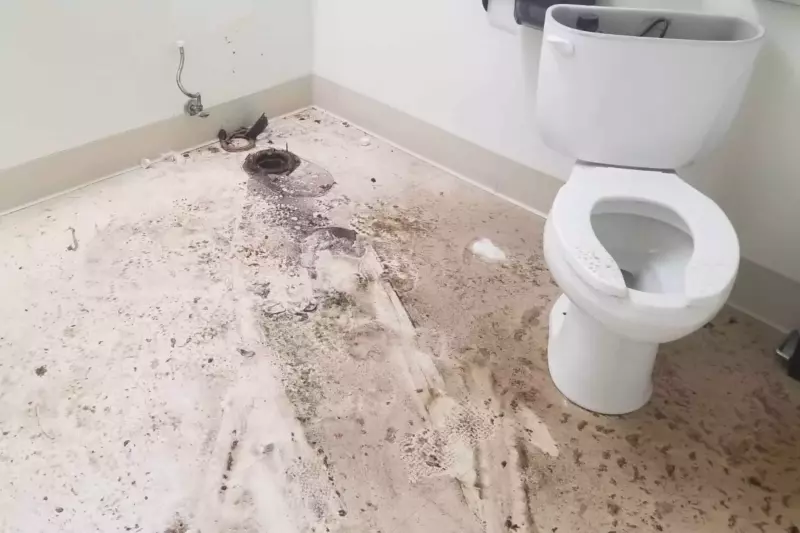
Generally, the main reason behind the no caulk argument is leak detection.
Many plumbers and home DIYers feel that if they caulk in a toilet, this reduces the ability to detect leaks in the future.
Leaks left undiscovered and untreated can cause major damage to your home, so it’s obvious why many take this stance.
In reality, unless it’s a major failure at the base of the toilet, the majority of small leaks will, in fact, leak through the hole where the main pipe connects to the rest of your sewage system.
So if a leak occurs, it will most likely leak through the bathroom floor, not on and around it.
If there is another floor below that toilet, like a basement. This will be the signal that you have a toilet leak.
In our experience, this is common in apartment buildings where the tenant below a leaking toilet will be the first person to notice.
So now that we put to rest the reason for not caulking around the base of the toilet, why should you caulk?
There are many positive benefits to caulking around the base, so keep reading to learn more.
🚽 Caulking Prevents Water Contamination
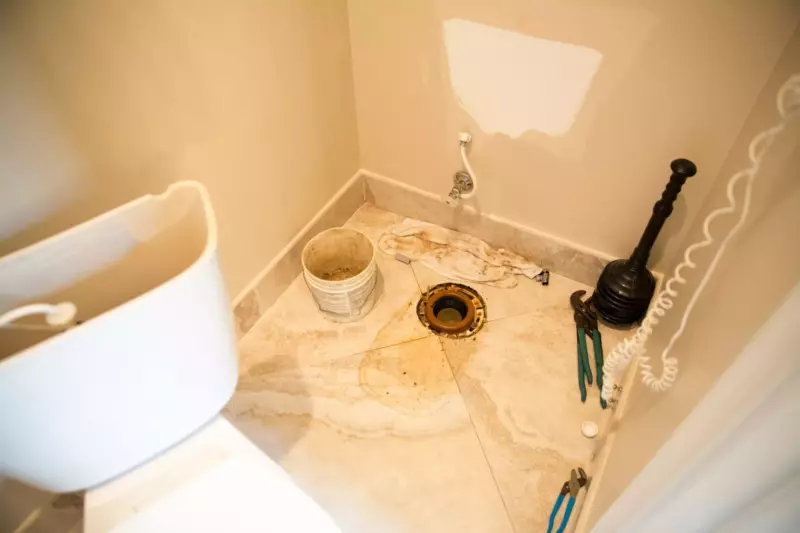
The caulking that supposedly prevents you from noticing a leak is beneficial in preventing other water sources from getting underneath your toilet.
It could be water splashing out of a bathtub, mop water, water from a shower and even misguided potty training from your young boys who seem to miss the toilet bowl every single time!
Without caulk around the toilet base, water can get under there and sit for a long time.
Stagnant water is a breeding ground for bugs and mold.
Applying silicone caulk prevents water infiltration and helps you maintain and clean and healthy bathroom.
This also leads us to the next point.
🚽 Caulking a Toilet Prevents Smell
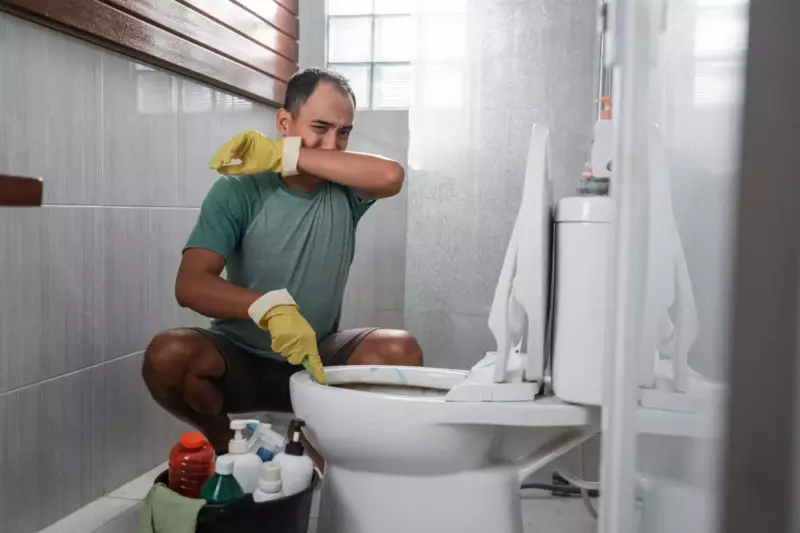
As stated above, caulking prevents water infiltration.
Even if you had a leak under your toilet, the odds are that most of the odors emitted from under your toilet are from external sources.
If you have a major failure and your bathroom smells like a sewage plant, a little caulking will not stop it from stinking up your home.
Related Reading: Why Does My Bathroom Smell Like Sewage? 9 Tips for a Happy Home!
🚽 A Caulked Toilet Base Looks Clean and Professional
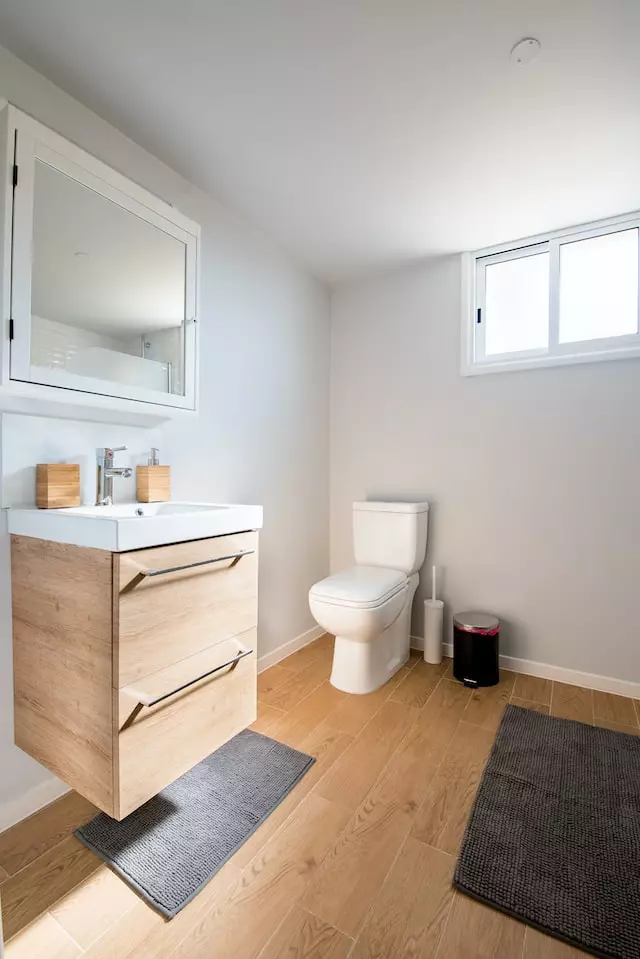
This is an obvious point for most people. A nice white or clear caulk line looks professional.
It’s used everywhere in wet areas around bathtubs, sinks, wash basins etc., so why not caulk around a toilet base?
Dark and uneven gaps just look nasty and cause a toilet installation to look unfinished.
🚽 Caulking Keeps the Toilet Secure
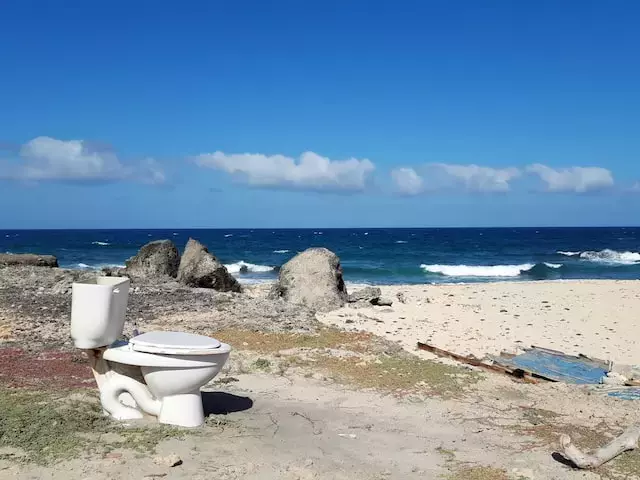
Caulking is essential in keeping your toilet from moving around.
Not all floors are completely flat, especially if you have bathroom floor tiles.
Plus, a loose toilet is dangerous, especially in a home where you might have elderly people or those with mobility issues.
An unsecured toilet will cause it to move around and can accelerate other parts to fail sooner than they should.
Plus, who wants to hear you rocking around while you’re trying to complete your business?
Most toilets are secured by bolts, which can only be tightened so much before you start cracking tiles and the porcelain base of the toilet.
Caulking provides a layer of cushioning if your floor is slightly uneven.
🚽 Plumbing Code Requirements
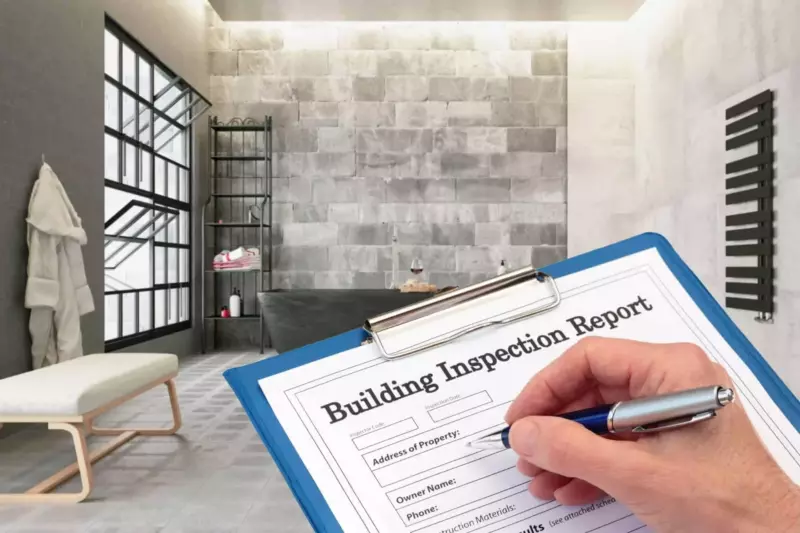
Here is the number one reason why you should caulk your toilet.
In most of the United States, it is a building code requirement to caulk your toilet to the floor.
Every state has a different code, so if you are unsure, ask your local plumber to find out the rule for your state.
With so many positive benefits to caulking a toilet, why would you not want to?
Without knowing all the plumbing codes, some DIY homeowners might just skip this step by accident.
While this isn’t a big issue while you own that home, the problem comes up when you go to sell and find out your home isn’t to code.
If discovered, this can result in a fine, but the bigger issue is that any potential homebuyer may be put off by your code violations and question what else is wrong with this home.
Here is the exact wording from the codes in question:
- 2012 International Plumbing Code, Chapter 4, Section 405.5, Water Tight Joints: Joints formed where fixtures come in contact with walls or floors shall be sealed.
- Uniform Plumbing Code (2009 edition), Chapter 4, Section 407.2 Joints: Where a fixture comes in contact with the wall or floor, the joint between the fixture and the wall or floor shall be made water-tight.
Some people that are against caulking will argue that the wax ring or wax seal at the base of the toilet already provides a sealed joint, while others will say the ring is insufficient for code compliance.
🚽 Go Ahead and Caulk The Toilet To The Floor!
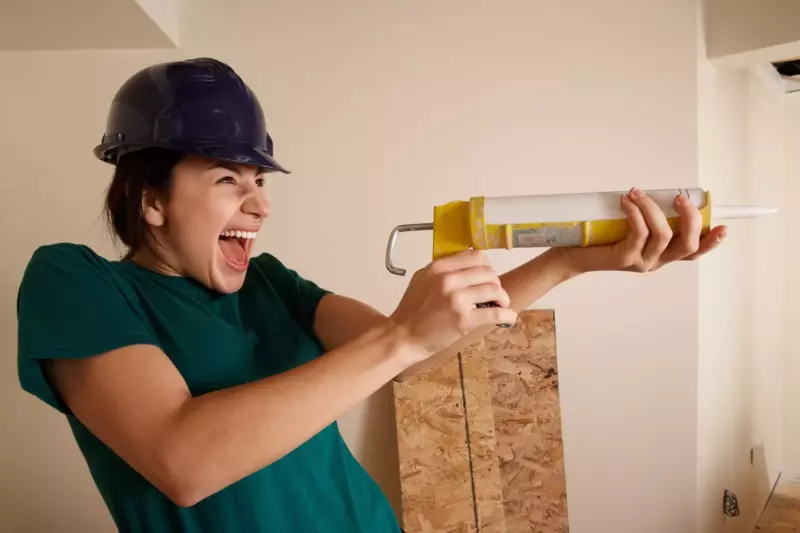
So with the no-caulking argument dead, go ahead and arm yourself with a caulking gun and caulk that toilet.
If you are worried about your toilet leaking and still want all the positive benefits we highlighted above, go ahead and add a caulk seal around your toilet but leave a small gap around half an inch in size around the back.
In the very odd case your toilet leaks from the toilet flange, it will still be obvious while still maintaining the positive benefits of caulking.
This may negate the capture of certain smells emanating from the base of your toilet, though in our experience, this mostly comes from external water infiltration, as noted above.
🚽 Need a Plumbing Professional?

Call your local plumbing professional if you are uncomfortable performing plumbing repairs at any time.
If you live in one of our service areas, call Phyxter Plumbing Services.
Phyxter local and independent plumbers are experienced in all plumbing issues and can get your home working in tip-top condition in no time at an affordable price.
Live in the Okanagan region and have a plumbing job that needs to be taken care of by plumbing professionals?
Phyxter Plumbing Services prides itself on providing the very best in Home Services, and you can rest assured that your home is in the very best of hands.
Related Reading: DIY Guide to 15 Common Plumbing Problems & Solutions

